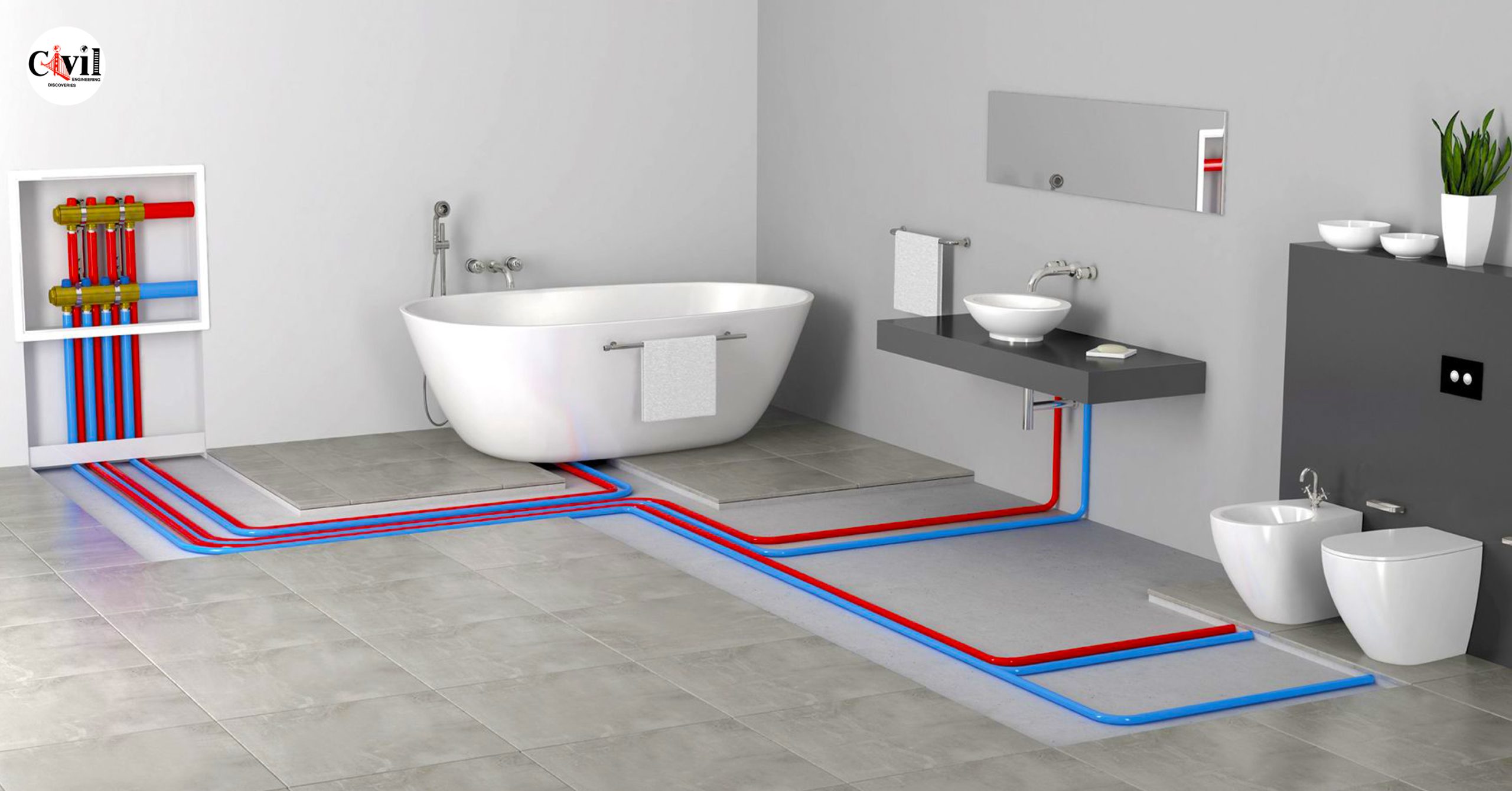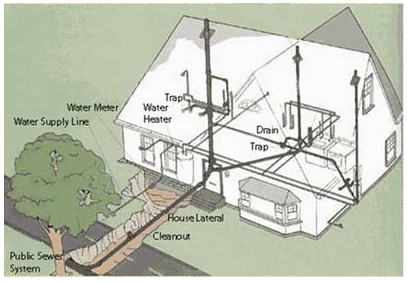A Closer Look at The Anatomy of Your House's Plumbing System
A Closer Look at The Anatomy of Your House's Plumbing System
Blog Article
What're your ideas with regards to Exploring Your Homes Plumbing Anatomy?

Recognizing how your home's pipes system functions is necessary for every single homeowner. From providing clean water for alcohol consumption, cooking, and bathing to securely getting rid of wastewater, a properly maintained pipes system is critical for your family members's wellness and convenience. In this thorough guide, we'll discover the intricate network that comprises your home's plumbing and offer suggestions on maintenance, upgrades, and dealing with common problems.
Introduction
Your home's pipes system is greater than simply a network of pipelines; it's an intricate system that ensures you have accessibility to clean water and effective wastewater elimination. Knowing its components and how they collaborate can assist you avoid expensive repair work and guarantee everything runs smoothly.
Basic Components of a Plumbing System
Pipes and Tubes
At the heart of your pipes system are the pipes and tubing that carry water throughout your home. These can be made of numerous products such as copper, PVC, or PEX, each with its benefits in regards to durability and cost-effectiveness.
Fixtures: Sinks, Toilets, Showers, etc.
Fixtures like sinks, bathrooms, showers, and tubs are where water is used in your house. Recognizing how these components link to the plumbing system helps in detecting issues and preparing upgrades.
Valves and Shut-off Factors
Valves control the circulation of water in your pipes system. Shut-off valves are essential during emergency situations or when you need to make fixings, enabling you to separate parts of the system without interrupting water flow to the whole home.
Supply Of Water System
Key Water Line
The major water line links your home to the community water supply or a personal well. It's where water enters your home and is dispersed to different components.
Water Meter and Pressure Regulatory Authority
The water meter steps your water use, while a stress regulatory authority makes certain that water moves at a risk-free pressure throughout your home's plumbing system, protecting against damages to pipes and fixtures.
Cold Water vs. Warm water Lines
Understanding the difference between cold water lines, which supply water straight from the main, and warm water lines, which carry warmed water from the water heater, assists in fixing and planning for upgrades.
Drain System
Drain Pipes and Traps
Drain pipelines bring wastewater away from sinks, showers, and commodes to the drain or sewage-disposal tank. Catches avoid sewage system gases from entering your home and likewise catch debris that might cause clogs.
Air flow Pipelines
Ventilation pipelines allow air right into the drainage system, protecting against suction that could reduce drain and create traps to vacant. Correct ventilation is crucial for preserving the stability of your pipes system.
Value of Proper Drain
Making certain appropriate water drainage prevents back-ups and water damages. Frequently cleaning drains and keeping traps can stop costly repair services and extend the life of your pipes system.
Water Furnace
Sorts Of Water Heaters
Water heaters can be tankless or standard tank-style. Tankless heaters warm water on demand, while tanks keep warmed water for immediate use.
Upgrading Your Pipes System
Factors for Upgrading
Upgrading to water-efficient fixtures or changing old pipes can improve water high quality, reduce water expenses, and enhance the worth of your home.
Modern Plumbing Technologies and Their Benefits
Discover technologies like wise leakage detectors, water-saving bathrooms, and energy-efficient hot water heater that can save money and minimize environmental effect.
Price Considerations and ROI
Determine the ahead of time expenses versus lasting financial savings when taking into consideration pipes upgrades. Several upgrades spend for themselves with minimized energy bills and less fixings.
How Water Heaters Attach to the Pipes System
Comprehending exactly how water heaters connect to both the cold water supply and hot water distribution lines helps in detecting issues like insufficient hot water or leaks.
Maintenance Tips for Water Heaters
On a regular basis purging your hot water heater to eliminate debris, checking the temperature settings, and examining for leaks can extend its lifespan and boost power effectiveness.
Common Plumbing Concerns
Leakages and Their Reasons
Leakages can happen due to aging pipes, loosened installations, or high water pressure. Dealing with leaks immediately avoids water damage and mold growth.
Obstructions and Blockages
Clogs in drains pipes and commodes are commonly triggered by flushing non-flushable things or a build-up of oil and hair. Utilizing drain screens and bearing in mind what decreases your drains can avoid blockages.
Indicators of Pipes Troubles to Expect
Low tide stress, sluggish drains, foul odors, or abnormally high water bills are signs of possible pipes problems that should be resolved immediately.
Plumbing Maintenance Tips
Normal Assessments and Checks
Arrange yearly plumbing examinations to capture issues early. Try to find indicators of leakages, corrosion, or mineral buildup in taps and showerheads.
DIY Maintenance Tasks
Simple jobs like cleaning tap aerators, checking for commode leaks utilizing dye tablet computers, or insulating revealed pipes in cold environments can prevent major plumbing problems.
When to Call a Specialist Plumbing Technician
Know when a plumbing problem requires expert know-how. Trying complicated repair work without correct knowledge can result in even more damage and higher repair service prices.
Tips for Minimizing Water Usage
Simple routines like taking care of leaks immediately, taking shorter showers, and running complete loads of washing and recipes can save water and lower your energy expenses.
Eco-Friendly Plumbing Options
Take into consideration sustainable plumbing products like bamboo for flooring, which is durable and environment-friendly, or recycled glass for countertops.
Emergency situation Readiness
Actions to Take During a Plumbing Emergency
Know where your shut-off shutoffs lie and exactly how to turn off the water in case of a burst pipe or significant leakage.
Importance of Having Emergency Situation Calls Handy
Keep call info for neighborhood plumbings or emergency solutions conveniently available for quick action throughout a plumbing dilemma.
Environmental Effect and Preservation
Water-Saving Fixtures and Home Appliances
Setting up low-flow faucets, showerheads, and bathrooms can substantially minimize water usage without compromising efficiency.
DIY Emergency Fixes (When Suitable).
Short-lived fixes like using duct tape to spot a dripping pipeline or positioning a bucket under a dripping faucet can decrease damages until a professional plumber arrives.
Final thought.
Comprehending the composition of your home's plumbing system equips you to preserve it successfully, conserving money and time on fixings. By adhering to normal upkeep routines and staying notified regarding modern pipes technologies, you can guarantee your pipes system runs effectively for many years to find.
HOW YOUR PLUMBING SYSTEM WORKS
Which Pipes Do What?
Blue lines = fresh water supply entering the building Red lines = hot water supply entering the building Grey lines = pipes carrying waste away from the building and venting pipes carrying gases away from the building (through the roof) YOUR MAIN PLUMBING SYSTEMS
There are two main plumbing systems that support your home s basic plumbing needs one that brings clean water into your home, and one that sends dirty water away from your home. Connected to the toilet, bath, shower, and other faucets in your home, these two systems keep your water flowing in the right directions.
ACCESSING FRESH WATER
Fresh and clean water is brought into your home through the main water supply line . Filtered through one pipe, this water is pressured to flow into the various fixtures in your home at any given time.
This water can be sourced from a well located on your property, a pond or river (mostly cottages), or, as in most cases, from the city s municipal water treatment centre. However, it is important to note that water that is untreated, such as the water siphoned from ponds or rivers, may not be safe to drink. Personal water supplies always need to be treated for hardness and contaminants before consumed.
MUNICIPAL WATER SUPPLIES
Improve taste and odour Remove sediment Eliminate hardness Reduce chlorine COLD WATER SUPPLY VS. HOT WATER SUPPLY
Cold water flows into your home or building through the service line, which then distributes hot or cold water to your fixtures. This line is most commonly run through a central column that runs floor to floor. Hot water runs in short and straight pipes as the longer the pipeline, the more heat that will be lost in the transfer. Having shorter pipes also allows residents to access hot water more quickly.
WASTE WATER SYSTEM
Your wastewater system is divided into two parts pipes that send wastewater away from your home and venting pipes that send sewer gas away from your home. Sewage water travels through pipes that flush the water and waste towards local sewers that are operated and managed by your city or town. Most sewer systems rely on gravity to move the wastewater to where it needs to go.
The further away from your toilet or sink, the larger wastewater pipes become. This allows for waste to be disposed of from various parts of your home or business at once without pipe blockages. The angle and flow of these pipes are also essential for keeping your waste pipes clear of build up.
https://harrisplumbing.ca/how-your-home-plumbing-system-works/

I ran across that piece about Anatomy of a House: Understanding the Components while doing a search on the internet. Appreciated our blog? Please quickly share it. Help other people locate it. Thank you so much for going through it.
Click Here Report this page